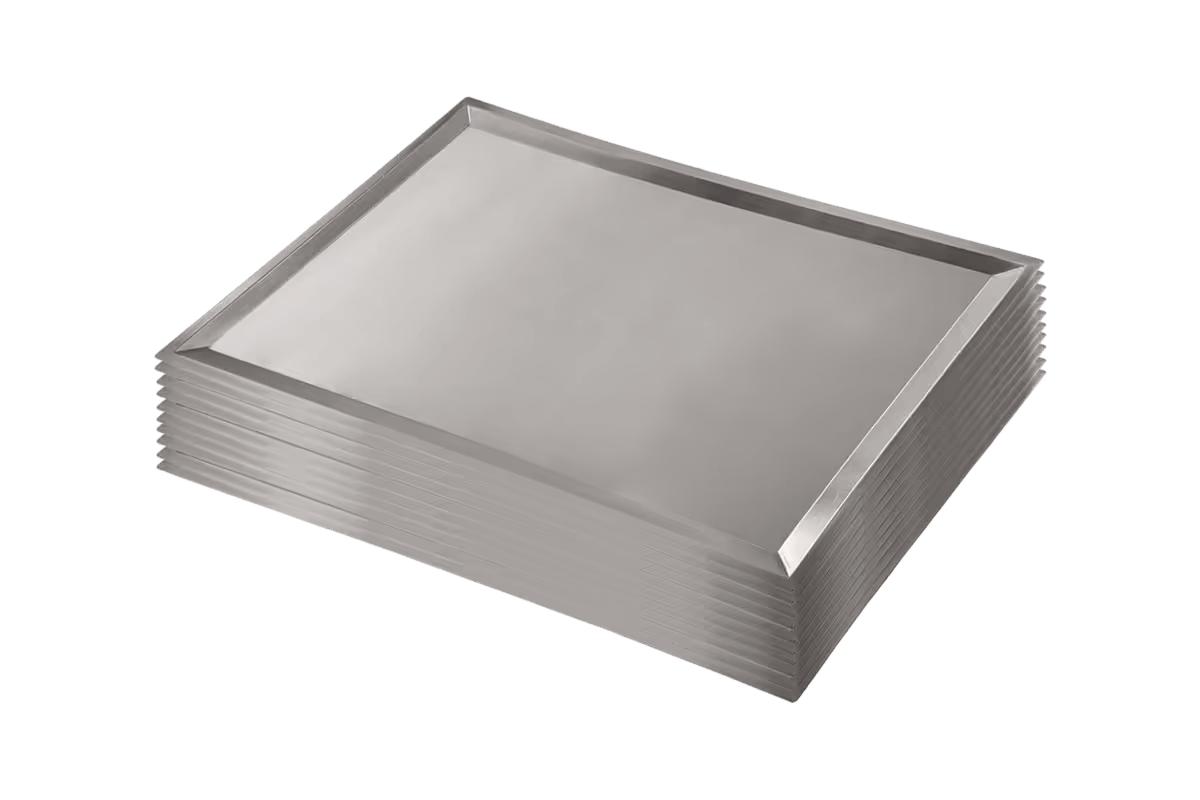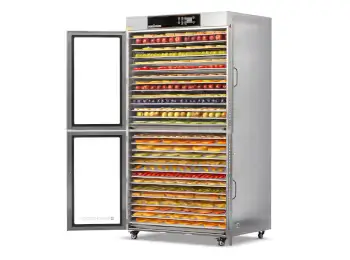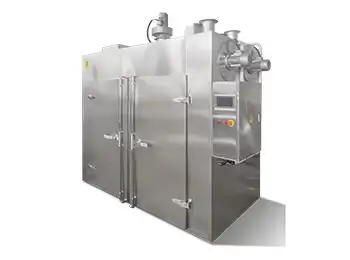Pampered pooches and their preferred pet treats
Pet food is a big business in Canada. We love our pets with 7.1 million dogs and 8.1 million cats, and Canadian pet food businesses1 generate $4.1 billion in sales domestically, as well as export more than $1 billion dollars of products to more than 90 countries.
We all know owning a pet has many positive health benefits. Our pets can make us physically and mentally healthier and many pet owners have adopted ‘pet parenting’ behaviors, mimicking traditional parent-child relationships.
It’s therefore no surprise pet parents want only the best for their fur babies. Growing concern over the contents of commercial pet foods, along with the expanding social lives of dogs, has renewed interest in quality dehydrated pet treats. Dehydrated pet foods have many of the benefits of fresh/frozen raw food, but in an easier way for people to manage.
In fact, the Pet Food Association of Canada2 expects the industry to grow at an average compound growth rate of 4.75% between 2021 to 2025!
Pet owners also want honest food safety information surrounding the sourcing, production and storage of commercially dehydrated pet treats. And rightly so. Turning fresh meat, fruit or vegetables into tasty pet treats is serious business.
Sourcing meat for pet consumption
Pet owners place a lot of trust in pet food manufacturers to produce high quality, nutritious, palatable and safe pet foods. In Canada, the pet food industry is self-regulated,2 but that doesn’t mean Canadian made pet food isn’t safe!
With most Canadian companies exporting to the United States, this means meeting the Food and Drug Administration requirements, as well as following the recommendations of the Association of American Feed Control Officials (AAFCO)3, which has manufacturing guidelines for pet food companies. The Canadian Food Inspection Agency is responsible for inspecting pet food facilities to ensure they meet regulatory and export requirements.
The Food and Drug Administration (FDA)4 regulates the production of pet food, including pet treats or snacks, and is similar to that for other animal foods. According to the FDA website,
‘The Federal Food, Drug, and Cosmetic Act (FFDCA)5 requires that all animal foods, like human foods, be safe to eat, produced under sanitary conditions, contain no harmful substances, and be truthfully labeled.’
While the FDA doesn’t require pre-market approval of pet food products, it does ensure:
‘…that the ingredients used in pet food are safe and have an appropriate function in the pet food. Many ingredients such as meat, poultry and grains are considered safe and do not require pre-market approval. Other substances such as sources of minerals, vitamins or other nutrients, flavorings, preservatives, or processing aids may be generally recognized as safe (GRAS) for an intended use (21 CFR 582 and 584) or must have approval as food additives (21 CFR 570, 571 and 573). Colorings must have approvals for that use as specified in 21 CFR 70 and be listed in Parts 73, 74, or 81.’
Storing and transportation of meat intended for use in pet food
Pet food producers and their suppliers have always had to abide by the Federal Food, Drug, and Cosmetic Act (FFDCA)5. However, when the Food Safety Modernization Act (FSMA)6 passed in 2011, and amended last in 2017, there were new requirements and mandatory product safety standards for all U.S. pet food makers. The focus of the new law was the prevention of illness. The law also means the FDA can organize facility inspections to verify FSMA compliance and make sure imported foods meets U.S. food safety standards.
The Pet Food Institute7 adds:
With few exceptions, just as with human food, FSMA requires pet food makers to:
- Implement current good manufacturing practices (CGMPs) that include requirements for employees, facility design, equipment upkeep and maintenance
- Identify and evaluate hazards (biological, chemical or physical) that may be associated with the foods they make, and put into place procedures (“preventive controls”) that address those hazards
- Develop and implement a food safety plan detailing the steps they are taking to ensure product safety, from the sourcing ingredients to carrying out a product recall if ever needed
- Comply with FSMA requirements regarding foreign suppliers and sanitary transportation for both finished food pet food/treats and ingredients.
Pet food producers, just the same as food produced for human consumption, must also adhere to the relevant FDA codes. Most states regulate pet food products under their animal feed laws but, as a general rule of thumb, when receiving raw meat:
- Move it as quickly as possible to a storage space that’s clean, dry and pest free
- stored at 4°C (40°F) or colder – check it with a thermometer
- stored separately from or below ready-to-eat foods to avoid contamination
- not stored in warm or humid areas, or in direct sunlight - this could spoil the food or make it unsafe
- stored in containers and packaging, off the ground and away from chemicals like cleaners and insect sprays.
Extra ingredients
A great way to have a healthy dog is to introduce fresh fruit and vegetables into their diet and an easy way to do this is via dehydrated pet treats. While they can be added to an animal’s diet alone, it’s more common in commercially prepared pet treats for the fruit and veggies to be incorporated into a meat treat. And similar to a fussy child, a fussy dog won’t even know there’s extra goodness in the food.
A dog’s diet should ideally contain at least 20% vegetables. Vegetables that are especially good for dogs include:
- green beans,
- cabbage,
- carrots,
- cauliflower,
- broccoli,
- squash, and;
- green, leafy vegetables.
Animals and HACCP
Animals used for pet meat must be handled in accordance with the Federal Food, Drug, and Cosmetic Act (FFDCA)5.
Originally developed by NASA and a group of food safety specialists in the ‘60s, Hazard Analysis Critical Control Point (HACCP) is an internationally recognised food safety and risk assessment plan. The plan outlines seven key principles in food safety:
- Hazard Analysis
- Critical Control Points
- Critical Limits
- Critical Control Monitoring
- Corrective Action
- Procedures
- Record Keeping.
While not mandatory in North America, providers to the pet food industry can have their products endorsed under HACCP8 guidelines.
Packaging and labeling of pet food
When it comes to labelling, the FDA9 advises the following:
Pet food labeling is regulated at two levels. The federal regulations, enforced by the United States Food and Drug Administration (FDA)9, establish standards applicable for all animal feeds:
- proper identification of product,
- net quantity statement,
- manufacturer's name and address, and;
- proper listing of ingredients.
Some states also enforce their own labeling regulations. Many states have adopted the model pet food regulations established by the Association of American Feed Control Officials (AAFCO)10. These regulations are more specific in nature, covering aspects of labeling such as the product name, the guaranteed analysis, the nutritional adequacy statement, feeding directions, and calorie statements.
In addition to the FDA guidelines, the Pet Food Association of Canada has worked with other stakeholders to develop pet food labelling guidelines.11 Please note these are guidelines, not laws and if you have specific questions, it’s a good idea to seek legal advice for the markets you’ll be selling in.
Complementary pet foods and the social animal
Complementary pet foods are those other than the pet’s main food source. In other words, treats, snacks and rewards. And while nobody will argue cats are deserving of treats and tasty snacks, let’s face it, when we think of snacks, training and rewards, we’re thinking dogs.
The use of treats to reward dogs during training or when out and about is nothing new. However, with the upsurge in recent years of pet-centric people and families, along with a more focused concern about the contents of pet food, the ability of commercially produced dehydrated pet treats to become a true market force has never been more pronounced.
And not only that, dogs in the 21st century are highly social creatures within the community. These days, walking your dog is an expectation of pet parents and families. If you can’t walk your own, you hire someone to do it for you. Pet parks, pet beaches, doggy day care, pet holidays, the list is endless.
And what’s one thing these activities have in common?
The need for a portable, healthy, nutritious and delicious pet treats to keep dogs well behaved and well fed while out and about.
Cheap and nasty dog biscuits as a treat? The 21st century pooch says a firm no thank you.
Storage and shelf life
Just like foods produced for human consumption, pet foods have a similar shelf life. When safely stored in a vacuum-sealed package in a cool, dark spot, dehydrated pet treats can expect to have a shelf life of up to 2 years. If the package shows any condensation or other signs of moisture, if it looks unusual or smells funny, it’s likely to have spoiled. And if it’s mouldy, throw it in the bin.






































.svg)



